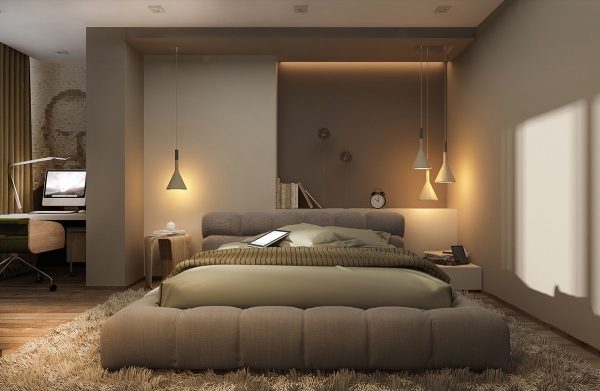Mistakes That Increase Your Interior Budget
Planning a home interior?
One of the most common problems new homeowners face is going over budget without realizing why. Whether you’re doing interiors for a 1 BHK, 2 BHK, or 3 BHK, seemingly small decisions can lead to major cost escalations.
In this guide, we break down the top interior design mistakes that increase your budget, how to avoid them, and what to prioritize if you’re working with a tight spending limit.
Why Budgeting for Interiors Often Fails
Even when you have a clear interior budget—say ₹5–10 lakhs for a 2 BHK—the actual costs often go 20%–50% higher due to:
- Miscommunication with vendors
- Impulsive choices on finishes
- Underestimating material or labor costs
- Ignoring hidden charges (hardware, delivery, taxes, etc.)
Let’s explore where things go wrong.
1. Not Finalizing a Design Plan Before Execution
One of the biggest mistakes is starting execution without a finalized design layout, color scheme, or material selection.
Why This Increases Budget:
- Frequent design changes lead to the wastage of materials
- Additional labor costs due to rework
- Time delays lead to more money spent on site
Tip: Get a 3D design or layout approved and locked before any work begins. Use mood boards or walkthroughs.
2. Choosing Premium Finishes Everywhere
It’s tempting to go for high-gloss acrylic kitchens, PU-finished wardrobes, and Italian marble flooring—but applying top-tier finishes across your home can double your cost.
Better Strategy:
Use premium finishes only in high-impact areas:
- Acrylic for kitchen shutters only
- Veneer or PU for the living room TV unit
- Keep bedrooms and storage areas in matte laminate
Tip: Combine high-end elements with budget-friendly ones for a balanced aesthetic.
3. Full False Ceiling in Every Room
A complete false ceiling for the entire house may look appealing, but it can cost upwards of ₹1.5 lakhs in a 2 BHK.
What to Do Instead:
- Use a false ceiling only in the living + dining
- Go for simple drop ceiling designs instead of layered or back-lit ones
Tip: Use wall sconces and pendant lights to add ambiance without the ceiling cost.
4. Oversized Furniture for Small Spaces
Choosing large sofas, beds, or wall-to-wall wardrobes without space planning can lead to wasted money and cramped rooms.
Result:
- Custom resizing (cutting or re-making) increases cost
- Transport and installation become more complex
- Doesn’t serve a functional or aesthetic purpose
Tip: Choose modular or multi-functional furniture sized as per your floor plan.
5. Ignoring Storage Planning Early
A major cost hike comes from last-minute storage add-ons like lofts, cabinets, and drawers that weren’t planned earlier.
Solution:
- Plan storage in bedrooms, kitchens, and even bathrooms during the layout phase
- Include internal accessories (drawers, hangers) early
Tip: Modular wardrobes and kitchen cabinets are more cost-effective when factory-made than site-built later.
6. Over-Customizing Everything
From made-to-order furniture to custom wallpapers and bespoke wall panels, over-customization is expensive and not always necessary.
Cost Impact:
- Custom elements need skilled labor and premium materials
- Delay in sourcing + no economies of scale
Tip: Customize only where needed—like a pooja unit or a study desk. Use pre-made modular items for the rest.
7. Skipping Material Research
Many homeowners blindly trust the contractor’s or vendor’s recommendation without comparing alternatives.
What You Might Overpay For:
- Branded plywood when a generic BWP-grade would suffice
- Expensive hardware when mid-range options do the job
- Premium tiles, when matte vitrified ones are cheaper and just as durable
Tip: Ask for the BOQ (Bill of Quantities) and cross-check material prices online or at local stores.
8. Changing Materials or Finishes Midway
Changing from laminate to membrane, or granite to quartz countertop, once the site work starts, leads to:
- Material wastage
- Rework charges
- New delivery costs
Tip: Do a mock-up or sample check before final approval. Finalize every finish upfront.
9. Underestimating Soft Furnishings & Décor
Interior budgets often leave out:
- Curtains and blinds
- Rugs, cushions, bed linen
- Paintings, plants, and décor lights
This can easily cost another ₹50,000–₹1 lakh, depending on your choices.
Tip: Set aside 10% of your total budget for finishing touches and styling.
10. Hiring Unverified Vendors or Freelancers
Choosing the cheapest quote without checking the vendor’s:
- Past work
- Timeline commitments
- Material quality
…can lead to shoddy work, delays, and the need for expensive fixes later.
Tip: Choose interior companies with verified reviews or go for vendors who offer design + execution contracts.
Bonus: Unexpected Budget Busters to Watch Out For
- Extra electrical points or switchboards
- Gas line extensions in the kitchen
- New plumbing for washbasins or a washing machine
- Internet or smart home wiring
- Additional wall treatments (wallpaper, textured paint)
These “non-visible” costs can collectively exceed ₹50,000 if not planned early.
How to Stay Within Budget – Expert Tips
- Have a 10% contingency fund: Always.
- Prioritize function over form in kitchens, wardrobes, and lighting.
- Stick to one design language to avoid unnecessary decor purchases.
- Choose vendors who provide transparent BOQs and warranties.
- Use a project tracker or spreadsheet to monitor ongoing costs.
Final Thoughts
Going over budget in interiors isn’t always due to inflation or cost of materials—it’s often due to avoidable mistakes, impulsive upgrades, and poor planning.
If you want to avoid overspending:
- Make informed decisions early
- Stick to a clear scope of work
- Be realistic about what matters most to you
Interiors don’t need to be expensive to look amazing—theymust be intentional.

Harish Yadav is the founder of Interio Group App. It is an Home-Interiors Marketplace where customers can hire Interior businesses and designers directly. Customers can get quotes for their interior needs.
